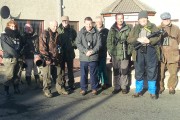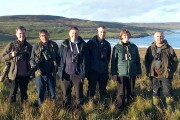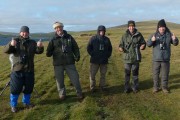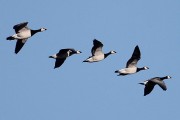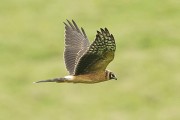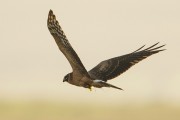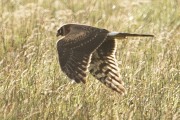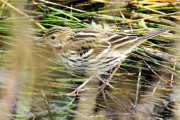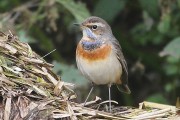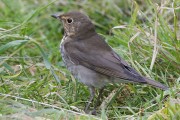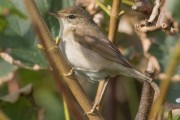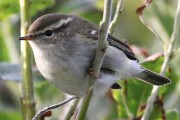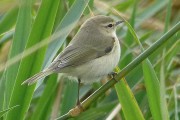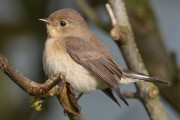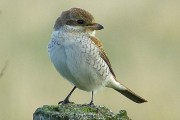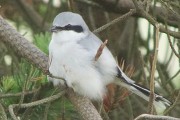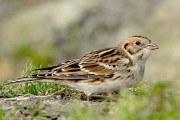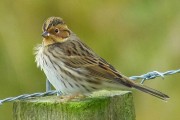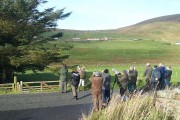Shetland 2015: Autumn Birding Review – In association with Birdwatch Magazine
Posted by Brydon Thomason on Monday 16th November 2015 | Birding in Shetland, News
As Shetland becomes ever more popular in autumn, high expectations hang over the magical Northern Isles for what the winds may bring. So well placed is the archipelago that even without favourable wind and weather the isles will usually still manage to deliver. This year’s prime-time weeks in late September and early October were a classic example of this.
These migrant birding holidays always begin with optimism and anticipation and indeed with the Quendale Thick-Billed Warbler (successfully twitched with a guest from a previous tour) and then finding a nice Blyth’s Reed Warbler the day before the trips began, leader Chris Rodger knew anything was possible, despite a not-so-promising long-term forecast.
In a systematic ‘trip-list style summary’ he rounds up the highlights.
Highlights
- National rarities: Swainson’s Thrush, Pechora Pipit, Pallid Harrier and Arctic Warbler.
- Regional rarities: Blyth’s Reed Warbler, American Golden Plover.
- Scarcities: Red-breasted Flycatcher, Red-backed and Great Grey Shrikes, Little Bunting, Common Rosefinch and Bluethroat.
- Self-found by the group: Richard’s Pipit, Bluethroat and numerous Yellow-browed Warblers.
Wildfowl
The evocative sight and sound of Whooper Swans arriving from Iceland was a regular feature, along with migratory movement of many Pink-footed and Barnacle Geese overhead on their journey south. On the sea, Long-tailed Duck numbers seemed to swell by the day, with Velvet Scoter and Slavonian Grebe also enjoyed. In addition to the many Red-throated Divers, some Great Northern Divers still retained stunning summer plumage. A fine drake Greater Scaup was seen at Loch of Norby.
Raptors (and owls)
Undoubtedly the star bird of prey was the juvenile Pallid Harrier, seen coming to roost at Northdale, Unst. Hen Harrier, Peregrine and Short-eared Owl were less frequent than the many migrant Kestrels, Sparrowhawks and Merlins, which were particularly numerous this autumn.
Waders to doves
As is true to form on previous Shetland autumn birding trips, Nearctic waders were sure to feature and this year came in the form of a ‘classic’ juvenile American Golden Plover, which really stood out among the European ‘Goldies’ at Sandwick. Many Jack Snipe were seen – mostly rising from marshes and often almost from underfoot, but some particularly obliging birds at Lambaness froze to the spot to show at close range their beautiful cryptic plumage. A smattering of migrant waders included Ruff, Black-tailed Godwit, Grey Plover, Knot, a late Eurasian Whimbrel and the always ubiquitous and subtly different ‘Icelandic’ (faeroeensis) Snipe. White-winged gulls were incredibly scarce this year on Shetland, though Arctic Terns and one Common Tern lingered for the group to see. An adult European Turtle Dove at Haroldswick was well scrutinised to eliminate meena Oriental Turtle Dove.
Pipits to thrushes
A self-found Richard’s Pipit at Lambaness was a highlight for the group, schreeping for Scotland as it bounded across Lambaness and a good example of quality scarce migrants that feature as team self-finds to add that extra gratification. This was the first of several seen. A ‘tiger-striped’ Pechora Pipit, twitched at Norby, eventually yielded to give excellent views as it crept through the irises. A combination of its genuine rarity value, Shetland speciality status and confiding nature ensured this was a firm favourite of the week. Braving gale force wind and rain on Unst, a female Yellow Wagtail was found by the group as was a Bluethroat, discovered hunkered down in a ditch at Burrafirth – if ever proving that ‘you have to be in it to win it’, no matter what the weather! Another fine Bluethroat was enjoyed feeding at close quarters at Quendale.
Undoubtedly a highlight came in the form of a Swainson’s Thrush on Unst – a superb end to the first full day of the trip. After a mad dash from literally the opposite end of Shetland, the group had to endure perhaps the most suspenseful wait in fading light for the bird to hop out from under some fishery crates in the yard of a shop! Hop out it did, revealing the lovely buff face and eyering and subtle underparts spotting, and it even gave a close fly-by to show off its underwing stripe. This was a tick for all bar one of the group, who also saw one with our Shetland Nature autumn birding group on Unst last year!
Warblers and crests
Perhaps the group that forms the major attraction for rarity-hunters on Shetland, warblers – a common and rare alike – were relatively thin on the ground this autumn. Despite this, the group did see a Blyth’s Reed Warbler (which had been found by Chris the day before the trip started) and several Barred Warblers. An Arctic Warbler was a rarer highlight; the group missed this bird on Unst, when it disappeared on the day it lost its tail. However, we caught up with what must surely have been the same bird several days later when a tail-less Arctic Warbler was found in central Mainland. To be fair, Yellow-browed Warblers didn’t disappoint this autumn – amazingly by far the most frequent warbler, but very much still a joy to see. As ever, the Shetland autumn trip allowed the comparison of side-by-side Common and Siberian Chiffchaffs. A personal favourite were the mornings when Shetland is seemingly awash with tiny Goldcrests – mass landfall of these wee 5-gram waifs signal ‘birds in!’.
Flycatchers to buntings
Both groups enjoyed three species of flycatcher, including some very confiding, and always photogenic, Red-breasted Flycatchers. Both Red-backed and Great Grey Shrikes were seen on Unst. Of the finches, Bramblings added colour while redpolls, although surprisingly scarce in the islands this autumn, encouraged ID discussion. A most impressive sight was a flock of 200 very confiding Snow Buntings, swirling all around us like an avian snowstorm on the wild windswept headland of Lambaness. A scarcity that we can usually look forward to throughout the Shetland is Common Rosefinch, which this year was hard won but eventually added to the trip list, unlike a Lapland Bunting which fed virtually at our feet. Of the scarcer buntings, a nice bright Little Bunting on Fetlar was timed well, found by fellow SN team members Micky and Brydon on the same day we were all on the isle. Perhaps a commoner example of the many Shetland scarcities to end on, but it does leave tantalising thoughts for what the review might start with for next year’s Shetland Autumn Birding trips!
Chris Rodger


